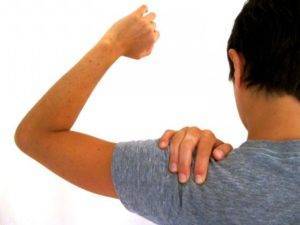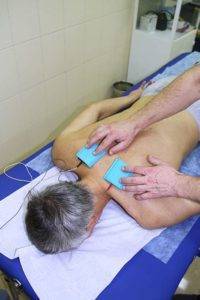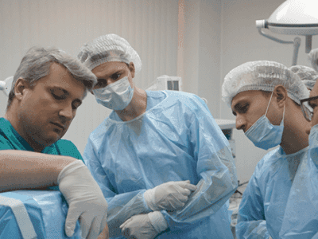
Currently, according to medical statistics, almost everyone over 25-30 years old complains of symptoms of cervical osteochondrosis. The disease affects this part of the spine more often than others. Pathology is a progressive degenerative process that affects intervertebral discs and vertebrae located in the neck. The disease is equally common among men and women.
This is a dangerous and complex form of osteochondrosis, as there are large blood vessels in the neck that supply the brain and a large number of nerve endings. Disorders of innervation and blood flow lead to a deterioration in the supply of oxygen and nutrients to the brain.
Signs of disease
Symptoms of cervical osteochondrosis are more pronounced than in other parts of the spine, even with minor injuries. This is due to the fact that the neck vertebrae are close to each other and the intervertebral discs are of low height. This anatomical feature contributes to the fact that, in osteochondrosis, nerve endings, spinal cord and blood vessels are more often compressed.
General symptoms:
- pain syndrome
- ;
- weakness and decreased sensitivity in the upper limbs;
- restricted mobility of the neck;
- impaired movement coordination;
- frequent dizziness;
- general weakness;
- deterioration in the functioning of the organs of perception (hearing, sight, touch, taste).

Pain is usually located in the neck, radiating to the back of the head, shoulders and arms. The upper limbs hurt if the nerve root responsible for their innervation is compressed by the damaged vertebra. The pain in the back of the head is caused by spastic contractions of the neck muscles connected to the occipital bones and impaired blood circulation in this area.
Weakness of the arms is seen in patients if a nerve root is involved in the pathological process, which provides innervation to the muscular structures of the upper extremities.
Restriction of mobility and a characteristic click when turning or tilting the neck occurs if bone growth appears in the cervical vertebrae, the height of the intervertebral discs decreases and the joints located between the vertebrae are affected.
The vertebrae in the neck have transverse processes that form a channel through which an artery that feeds the brain runs. With osteochondrosis of the cervical spine, the vertebrae are displaced and connective tissue grows over them. This leads to compression of the cervical artery, deterioration of the blood supply to the cerebellum and back parts of the brain. As a result, a person has frequent dizziness, impaired movement coordination and general weakness. In advanced cases, if the artery is involved in a pathological process or is heavily compressed, the blood supply to the cerebellum, occipital region and brain stem deteriorates significantly. In this case, the functionality of Organs auditory organs, decreased vision, numbness of the tongue and fingers are observed.
The symptoms of the disease also depend on which of the eight vertebrae is affected by a degenerative or inflammatory process. Sensitivity and movement disorders are caused by damage to the spinal roots, which are affected by certain vertebrae. Depending on this, the following manifestations of cervical osteochondrosis are observed:
- first vertebra - the neck and the occipital part of the head go numb, their sensitivity decreases;
- second - there is pain in the crown and occipital region;
- third - pain is felt and sensitivity decreases in the part of the neck where the compressed spinal root is located, the intensity of taste sensations decreases, speech disorders are present;
- fourth - pain radiates to the shoulder, scapula, the patient is concerned about heart pain, respiratory disorders, the tone of the neck muscles decreases;
- fifth - pain is noticed in the neck, given to the external surface of the shoulder;
- sixth - pain in the neck radiating to the scapula, felt in the forearm and thumbs;
- seventh - pain is given to the scapula, back of the shoulder, forearm and fingers (from the second to the fourth);
- eighth - the pain spreads from the neck to the shoulders, forearms and little fingers.
There are four degrees of cervical osteochondrosis, depending on the extent of the lesion. These are not the stages of the disease, but the severity of the symptoms, due to the extent of the pathological process, which vertebrae it affects.
- In the first degree, clinical symptoms are absent or minimal. Patients complain of mild pain, aggravated by head movements. The treatment started at this stage of the disease will be effective. However, people often ignore the alarming symptoms or do not feel them, so they do not go to the doctor.
- The worsening of the pathological process increases the symptoms. In the second phase, the pain becomes more pronounced, it is given to the upper extremities, shoulder blades. At this stage of the development of the degenerative process, the height of the intervertebral disc decreases, as a result of which the nerve fiber is pinched. This becomes the cause of the increased pain. For the second degree of osteochondrosis of the cervical spine, headaches, deterioration of health and decreased performance are characteristic.
- The third degree of cervical osteochondrosis is characterized by the formation of a herniation of the affected intervertebral disc. Neck mobility is limited; on palpation, the patient feels severe pain. With the spread of the pathological process, the pain becomes constant, radiating to the upper limbs. There is a feeling of tension in the muscles attached to the occipital bones. Patients complain of frequent dizziness, general weakness and numbness in the hands.
- The fourth degree of cervical osteochondrosis is diagnosed when the intervertebral disc is completely destroyed by the degenerative process. It is replaced by fibrous tissue, which leads to a significant restriction of mobility. The spinal cord and blood vessels in the neck are affected. These changes are characterized by a significant deterioration in the blood supply to the cerebellum and the occipital part of the brain. The lack of oxygen leads to impaired movement coordination, hearing loss, vision, tongue numbness and speech disorders.
Treatment methods
A timely visit to the doctor, when the first alarming symptoms appear, neck discomfort, nervous system reactions, will prevent the progression of degenerative changes. The treatment of cervical osteochondrosis consists of a set of therapeutic measures. Among them:
- taking medication; massage
- ;
- physiotherapy exercises;
- physiotherapy procedures.
Treatment is carried out at home and on an outpatient basis, under the supervision of a doctor. In some cases, more radical methods may be needed and the patient is hospitalized.
Medical therapy
The following groups of drugs are used to treat osteochondrosis of the cervical spine:
- non-steroidal anti-inflammatory drugs;
- chondroprotectors;
- muscle relaxants;
- drugs that improve blood rheological parameters;
- Vitamins B
Doctors prescribe anti-inflammatory drugs to reduce the intensity of pain, reduce inflammation and swelling of the nerve root. Chondroprotectors restore damaged cartilage tissue in the intervertebral disc. Muscle relaxants relax the neck muscles, relieve spasms. Medicines to improve blood flow help restore impaired blood supply to the brain. B vitamins activate metabolism in nerve tissues. With severe pain, the doctor may prescribe painkillers. If the patient has severe pain syndrome, analgesics are administered parenterally; after the pain subsides, they switch to the pills.
In addition to pharmaceutical drugs, the patient can use traditional methods of treating cervical osteochondrosis. Before using them, it is necessary to consult a doctor so that there is no conflict between medicines and non-traditional means. Decoctions and infusions of dill seeds, hop cones and lilac flowers help to stop the inflammatory process and relieve pain.
Physiotherapy

Physiotherapy is an effective way to combat osteochondrosis of the cervical spine. It is imperative to treat this disease using such techniques, so that the following results are achieved:
- decreases the intensity of pain;
- the restoration of the affected bone, cartilage and muscle tissues is activated;
- muscle spasm and tension are relieved;
- the inflammatory process is stopped;
- improves the supply of oxygen and nutrients to the affected area and to the brain.
The following types of procedures are considered to be the most effective in the treatment of osteochondrosis:
- electrophoresis of the drug (electrical current is applied to the affected region, which, in addition to activating blood flow and tissue restoration, improves the release of the drug's active substance to the tissues affected by the degenerative process);
- ultrasound therapy (metabolic processes in the diseased area are activated, pain decreases, inflammation is stopped);
- magnetotherapy (relieves swelling of the affected area, which helps to reduce the intensity of pain);
- laser therapy (improves blood circulation in the area of the pathological process, has an anti-inflammatory effect).
In addition, a doctor can advise on acupuncture and balneological procedures.
Physiotherapy exercises
Exercises are prescribed during the period when the acute manifestations of the disease are stopped. During gymnastics, there should be no discomfort and pain.

The complex must be executed when reaching a stable remission to prevent relapse.
- Lie down, lift your head and body, leaning on your hands. The back is straight, the breathing is deep and even. Hold the position for a minute or two, then slowly take the starting position. The number of repetitions is 3.
- Position - lying on your stomach, arms along your body. Slowly turn your head, trying to put your ear to the floor. Repeat 6 times on each side.
- Sitting or standing, tilt your head as you inhale, trying to reach your chest with your chin. As you exhale, gently pull your head back, looking up at the ceiling. The number of repetitions is 10-15.
- A good exercise to strengthen your neck muscles is to press your forehead against your hands. To get the effect, you need to press with your palms on your forehead and your forehead on your palms for 30 seconds. Repeat three times.
- Rotate your head in a circle. The exercise should be done slowly, gently. In each direction - 10 turns. Dizziness when making movements is unacceptable. If this happens, you must stop immediately.
All exercises should be done smoothly, without sudden movements, in case of deterioration of health, nausea, dizziness, stop immediately.
Massage

The course is prescribed by the doctor in the absence of acute pain, it can only be taken by a specialist with medical training. With such a disease, it is not recommended to contact non-professionals.
Healing effects of neck massage:
- improves blood and lymph flow in the affected area;
- muscles relax, relieve spasms;
- the intensity of painful sensations decreases.
Experts use the entire arsenal of massage movements: stroking, rubbing, kneading, squeezing and vibrating.
Surgery
The operation is indicated if conservative therapy does not work in six months, the patient has severe pain, signs of nerve fiber damage and myelopathy are observed. If osteochondrosis of the cervical spine continues with complications, there is a risk of stroke, there is strong compression of the spinal cord, then an operation is necessary.
According to the indications, the following types of surgical procedures are used:
- endoscopic discectomy - removal of part or all of the intervertebral disc;
- laminotomy - excision of bone ligaments and growing particles of bone tissue (often combined with laminoplasty - the installation of artificial plates to expand the spinal canal);
- laser vaporization of the disc nucleus - dividing the nucleus of the intervertebral disc with a laser beam simultaneously with the destruction of its destroyed fragments;
- cold plasma nucleoplasty - instead of an endoscope, a long, thin hollow needle is used, which is inserted into the intervertebral disc, through which an electrode is delivered to the injury site, which has an effect ofcold plasma.

The neck is a complex organ that contains large blood vessels, the spinal cord. They are easy to damage, so surgical interventions are used in a maximum of 5% of cases. Surgical treatment is usually accompanied by the development of complications. Between them:
- inflammatory process in the tissues or membranes of the spinal cord; osteomyelitis;
- Scar that leads to narrowing of the arterial and spinal channels.
Surgery on the cervical spine is difficult and requires a long period of rehabilitation. A patient's recovery after surgery takes six months or more.
Prevention
To prevent the development of cervical osteochondrosis, it is necessary to:
- monitor the position of the spine and neck;
- lead an active lifestyle, move more;
- when doing physical exercises, care must be taken, observing the correct performance, because even small injuries can affect the condition of the musculoskeletal system;
- take care of the correct position of the body during sleep, buy an orthopedic or anatomical mattress;
- adequately equip a workplace where a person spends a lot of time;
- regularly participates in physical education;
- monitor your diet, ensure the supply of all the beneficial minerals needed for strong bones, especially magnesium and calcium;
- is subjected to dispensary exams constantly for the timely detection of osteochondrosis.
Prevention will help prevent degenerative changes in the cervical spine, protecting against painful sensations, dizziness, numbness in the limbs and other unpleasant symptoms.





































